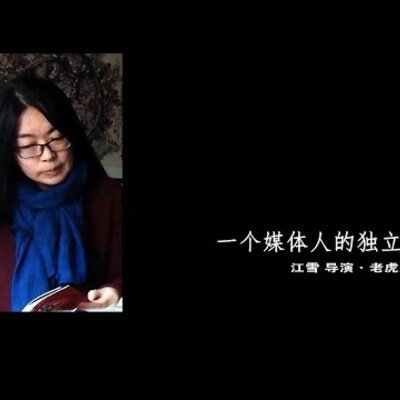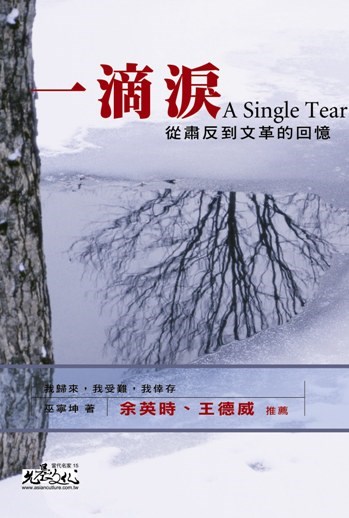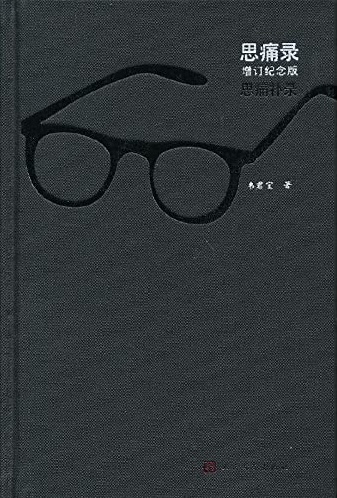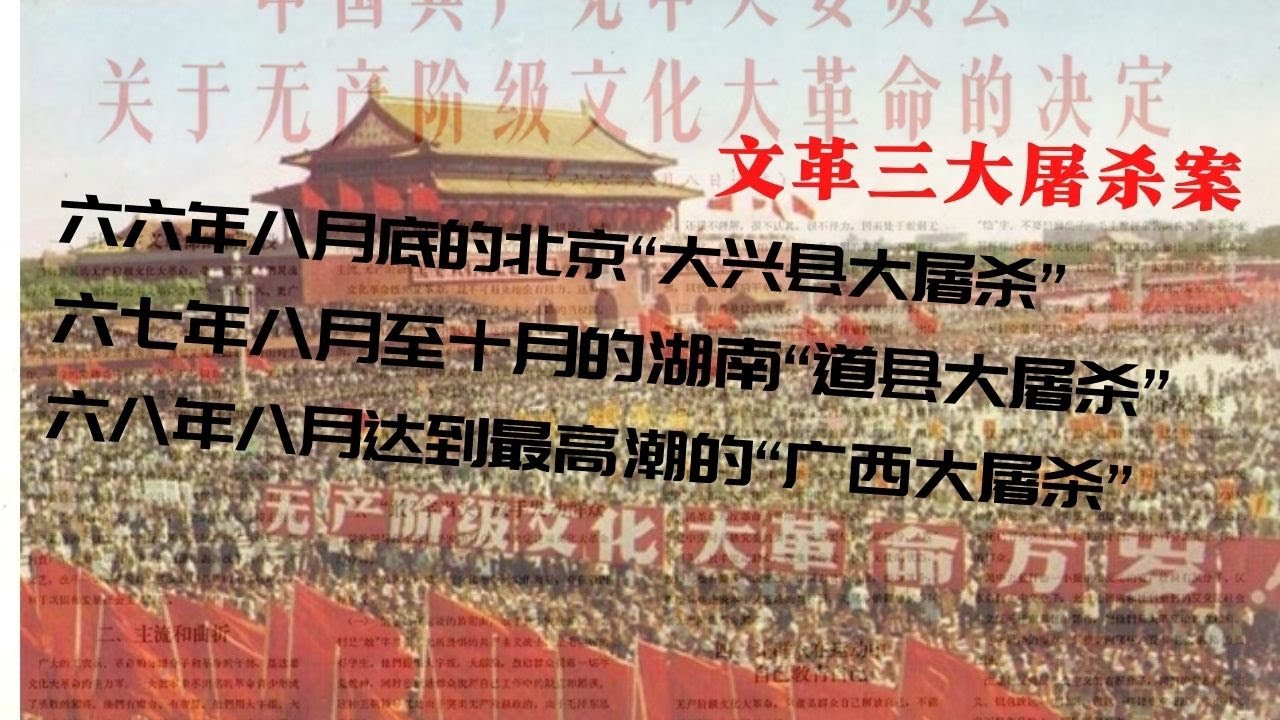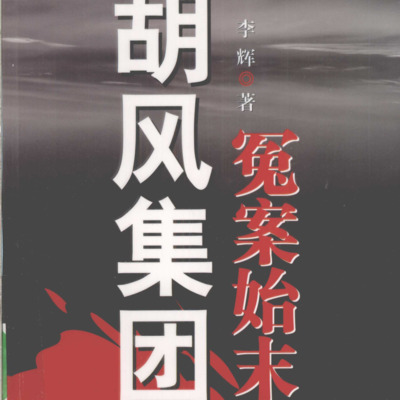
The History of the Wrongful Persecution of the Hu Feng Clique
Li Hui’s The History of the Wrongful Persecution of the Hu Feng Clique is a meticulously researched book that delves into the “Hu Feng Incident,” the first political campaign targeting intellectuals in the Mao era.
The book details how Hu Feng and his followers were accused of organizing an “anti-Party clique” in 1955, leading to decades of political persecution. Through extensive research of archival documents, memoirs of those involved, and interview materials, Li Hui uncovers all aspects of the “Hu Feng Incident”—its origins, development, and its profound impact on the fates of individuals and on society. The book not only explores the complex political factors and ideological conflicts behind the incident but also analyzes the tension and predicament in the relationship between intellectuals and state power during that specific period.
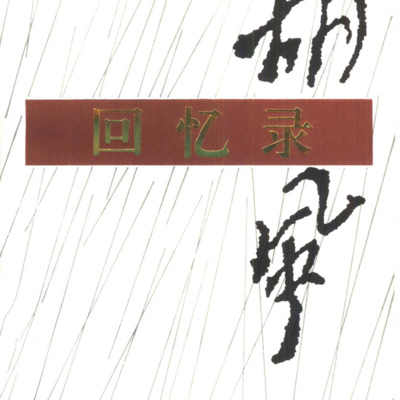
The Memoirs of Hu Feng
The Memoirs of Hu Feng is a work based on the oral accounts of the literary theorist and poet Hu Feng (1902-1985) in his later years, compiled and edited by others. This memoir primarily chronicles Hu Feng’s eventful life, from his early experiences and studies in Japan to his involvement in the left-wing literary movement and his interactions with cultural figures like Lu Xun. It also covers his entanglement in the “Hu Feng Incident” in 1955 and his subsequent decades of political persecution.
The memoir, from a first-person perspective, offers a detailed review of the significant historical events and ideological journey throughout Hu Feng’s life. It not only showcases his dedicated exploration of literary theory and his steadfast adherence to ideas like the “subjective fighting spirit” but also includes a wealth of first-hand materials, such as his correspondence with friends and comrades, and his evaluations of the prevailing literary trends and figures of the time. The book also provides readers with a valuable perspective for understanding the “Hu Feng Incident.”
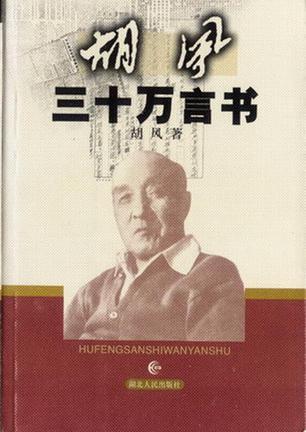
The 300,000-Character Letter by Hu Feng
The “300,000-Character Letter,” formally titled “Report on the Practice of Literature and Art Since Liberation,” was a lengthy article submitted by Hu Feng to the Central Committee of the Chinese Communist Party in 1954. This report, approximately 300,000 characters long, thus earned its popular name. It collectively reflected Hu Feng’s views and dissatisfactions regarding the cultural and artistic policies and the state of literature and art since 1949.
The core of the report was Hu Feng’s critique of the prevailing problems in the literary and art circles at the time, such as dogmatism, sectarianism, and formulaic, conceptual approaches. He believed these issues stifled the vitality and creativity of literature and art, hindering their healthy development. In the document, Hu Feng proposed that literary and art workers should have greater creative freedom, emphasizing the subjectivity and authenticity of artistic creation, and arguing that art should not simply be reduced to a tool for political propaganda. He particularly opposed the then-prevalent rigid understanding that “art is subordinate to politics,” advocating that literature and art have their own inherent laws and independent value.
The submission of the “300,000-Character Letter” did not receive a positive response from the Central Committee; instead, it was seen as a challenge to the Party’s literary and artistic line. In 1955, Mao Zedong deemed it to be in opposition to his “Talks at the Yan’an Forum on Literature and Art,” leading to the infamous case of the “Hu Feng Counter-Revolutionary Clique,” where he, along with thousands of others, was accused of forming an “anti-Party clique” and subjected to decades of political persecution. It was not until 1980 that Hu Feng was rehabilitated.

The Rivers I Have Crossed
(English follows) “Men kechken kéchikler” namliq bu kitab 20-esir Uyghur tarixidiki meshhur herbiy qomandan, 1940-yillardiki Sherqiy Türkistan Milliy Inqilabining ishtirakchisi we “urush qehrimani”, Uyghur xelqi arisida riwayetlik shexs bolup tonulghan polkownik Sopaxun Süwürofning eslimisidur.
Bu eslime yézilip 30 yildin artuq waqit ötkende, yeni aptorning wapatin 10 yil kéyin esli qolyazmidiki bezi sezgür téma we mezmunlarni qisqartish, shallash, qayta-qayta tehrirlik we siyasiy sénzordin ötküzüsh arqiliq, 2011-yili Béyjingdiki Milletler Neshriyati teripidin neshir qilin’ghan.
Melumki, 20-esirning aldinqi yérimida Uyghurlarning siyasiy tarixida yüz bergen ikki qétimliq zor milliy inqilab we uning netijiside Qeshqerde qurulghan Sherqiy Türkistan Islam Jumhuriyiti (1933-1934) bilen Ghuljada qurulghan Sherqiy Türkistan Jumhuriyiti (1944-1949) Kommunist Xitay hakimiyiti tiklen’gendin buyanqi hökümet tarixshunasliqi éytimida siyasiy sezgürliki intayin küchlük, hetta cheklen’gen téma bolup keldi. Bu heqte yézilghan mutleq köp qisim kitab we maqalilar Xitay hökümitining teshwiqat organliri tiklep bergen ramka we éytimda bayan qilindi. Tarixiy shahitlarning siyasiy cheklimilerdin xali eslime we xatiriliri, shundaqla Sherqiy Türkistandiki yerlik xelqning öz tarixiy kechürmishliri toghrisidiki éytimlirining neshir qilinishigha héchqandaq imkaniyet bérilmidi.
Undaqta, 1931-yili Qomuldin bashlinip uzun ötleyla pütkül Uyghur Rayonigha kéngeygen Sherqiy Türkistan milliy inqilabi hemde uning netijiside 1933-yili Qeshqerde qurulghan Sherqiy Türkistan Islam Jumhuriyiti toghrisida shahitlar néme deydu? 1944-yili 9-ayda Ilida partlighan Uyghur we Qazaq xelqining Gomindang hökümranliqigha qarshi milliy inqilabi we uning netijiside 1944-yili 11-ayning 12-küni Ghuljada qurulghan Sherqiy Türkistan Jumhuriyiti toghrisida shu inqilabqa qatnashqan we muhim rol oynighan shexslerning éytimi zadi qandaq? Ikki qetimliq Sherqiy Türkistan milliy inqilabining qatnashchiliri we inqilab shahitliri 1949-yilidin kéyinki Kommunist Xitay istilasidin kéyin qandaq qismetlerge duch keldi, ularning teqdiri qandaq boldi?
Tarixiy shahit we herbiy qomandan Sopaxun Süwürofning bu kitabi yoqiriqi soallargha hökümet meydanidin emes, belki shahitlarning közidin qismen bolsimu jawab béreligen eslimidur. Mezkur eslimining qimmetlik yéri shuki, aptor öz dewrining guwahchisi bolupla qalmastin, belki téximu muhimi 20-esir Uyghur tarixidiki ikki qétimliq Sherqiy Türkistan milliy inqilabining qatnashchisi we shahitidur. Aptor 1939-yilidin kéyin izchil türde herbiy septe xizmet qilghan, jenub we shimalda yüz bergen köpligen urushlarni béshidin kechürgen, shundaqla 1945-yilining bashliridin bashlap, Ilidiki Sherqiy Türkistan Jumhuriyiti milliy armiyeside yoqiri derijilik herbiy wezipe ötigen shexstur. Shundaq bolghachqa, bu eslime bir tarixiy shahitning ré’al kechürmishliri we körgen-bilgenlirining emeliy xatirisi bolush süpiti bilen 1940-yillardiki Sherqiy Türkistan milliy inqilabining ichkiy jeryanliri hemde Xitay-Sowet munasiwitining chégra rayonlardiki murekkep ich yüzini chüshinishte muhim ehmiyetke ige.
Mezkur eslime aptorning baliliq kechürmishliridin bashlan’ghan. Eslimining aldinqi yérimida aptor asasliqi 1931-yili yurti Qomulda partlighan milliy inqilab we uning kélip chiqish sewebliri; inqilabning murekkep we egri-toqay jeryanliri; “Shinjang ölkisi”ning re’isi, militarist Jin Shurénning esker ewetip qozghilangchi yerlik xelqni basturushqa urunushi; militarist Shéng Shiseyning esker bashlap bérip Qomul we Turpanda yerlik xelqlerni qirghin qilghanliqi; Sowét Ittipaqining Mongghuliye arqiliq Xojaniyaz Haji rehberlikidiki milliy inqilab yétekchilirini özige tartmaqchi bolghanliqi; milliy inqilabning kéyinche jenubqa kéngiyip, 1933-yili Qeshqerde Sherqiy Türkistan Islam Jumhuriyiti qurulghanliqi; 1937-yiligha barghanda militarist Shéng Shiseyning Sowét Ittipaqining herbiy küchige tayinip milliy inqilabni qanliq basturghanliqi qatarliq weqeler tepsiliy bayan qilinghan.
Eslimining ottura qismida aptor Sopaxunning 1936-yili Xuangpu Herbiy Mektipining Ürümchi shöbisige oqushqa kirgenliki, 1939-yili mezkur mektep püttürüp Qeshqerde turushluq atliq 31-polkqa teqsim qilin’ghanliqi, shuningdin kéyin izchil halda herbiy septe ofitsérliq wezipisini ötep, nurghun urushlargha qatnashqanliqi, 1945-yili 2-ayda qol astidiki milliy eskerlerni qozghap, Gomindang hökümranliqigha qarshi isyan kötürgenliki we axirida Ilidiki Sherqiy Türkistan milliy armiyesige qoshulghanliqi toghridiki weqeler bayan qilin’ghan.
Eslimining axiriqi qismida asasliqi 1944-yili 9-ayda Ilida partlighan Uyghur we Qazaq xelqining Gomindang hökümranliqigha qarshi milliy inqilabi we uning netijiside Ghuljada qurulghan Sherqiy Türkistan Jumhuriyiti toghriliq inchike bayanlar bérilgen. Aptor eslimide özining qandaq qilip Gomindang armiyesining bir rota komandiridin Sherqiy Türkistan Jumhuriyiti milliy armiyesining polkownik derijilik qomandanigha aylan’ghanliqi; 1945-yili 7-aydin 10-ayghiche milliy armiyening jenubiy yönilish qismigha komandir bolup, Aqsuni azad qilish urushigha qomandanliq qilghanliqi; Kéyinche Iligha qaytip, milliy armiye bash qomandanliq shitabida muhim wezipilerde bolghanliqi; kommunist Xitay istilasidin kéyin milliy armiyening qandaq jeryanlar bilen tarqitiwétilgenliki we özining herbiy septin mejburiy chékindürülgenliki; 1950-yillardin 1980-yillarghiche bolghan jeryanda özi duch kelgen siyasiy bésim we éghir teqipler heqqide inchike melumatlar bergen.
Sopaxun Süwürofning “Men kechken kéchikler” namliq eslime kitabi 1980-yillarning bashliridin bashlap yézilishqa bashlighan we zor sehipilik bir kitab bolghan bolsimu, emma Xitay hökümiti izchil halda neshir qilishqa ruxset qilmighan. Aridin 30 yildek waqit ötkende, yeni aptorning wapatigha 10 yil bolghanda, andin bu eslimining yérimidin köprek qismi neshriyat we teshwiqat bölümining qatmu-qat senzor qilishidin ötüp, 2011-yili Béyjingdiki Milletler neshriyati teripidin axiri neshir qilin’ghan.
Neshirge teyyarlighuchining kitab béshigha yazghan kirish sözige qarighanda, eslide 11 bab qilip yezilghan kitab originalidin 6 bapqa yeqin qismi qisqartilip, nechche yüz betlik mezmun chiqiriwétilgen. Kitabtiki bezi bap-paragraflar Xitay hökümitining “üch wilayat inqilabi” toghrisidiki hökümet éytimigha maslashturulghgan. Bu ehwallar mezkur eslimining esli originaligha, shahitlarning öz béshidin ötküzgen tarixiy kechürmishlirini bayan qilishtiki semimiyiti we chinliqigha dagh chüshürsimu, emma milliy inqilab shahiti we herbiy qomandan Sopaxunning hayat musapisi hemde 20-esirdiki Uyghur siyasiy tarixini chüshünishte melum qimmetke igidur.
This is the memoir of Sopakhun Süwüroff, a renowned military commander in 20th-century Uyghur history, a participant in the East Turkestan National Revolution of the 1940s, and a legendary figure widely known among the Uyghur people.
The manuscript, completed over thirty years ago, was finally published in 2011 by the Ethnic Publishing House in Beijing, a decade after the author’s death, following editorial revisions to certain sensitive content in the original text.
In the first half of the 20th century, two significant national revolutions in Uyghur political history and their outcomes—the establishment of the East Turkestan Islamic Republic (ETIR) in Kashgar in 1933-1934, and the East Turkestan Republic (ETR) in Ili in 1944-1949—have remained highly politically sensitive topics in official Chinese historiography since the establishment of the PRC. Discussion of these events has often been prohibited. Most publications on this history are confined to the official narrative framework and discourse set by Chinese government propaganda institutions. Original records, memoirs by historical witnesses, and accounts by local people about their own historical experiences have consistently been denied opportunities for publication.
So, how do historical witnesses describe the East Turkestan National Revolution? It began in Qomul (Hami) in 1931 and rapidly spread across the entire Uyghur region, leading to the establishment of the East Turkestan Islamic Republic in Kashgar in 1933. What are the accounts of key figures who participated in and played significant roles in the Ili Rebellion in September 1944, and the subsequent establishment of the East Turkestan Republic (ETR) in Ili on November 12 of the same year? What fate did the participants and witnesses of these two East Turkestan national revolutions face after the CCP took control of Xinjiang in 1949?
Sopakhun Süwüroff’s <i>The Rivers I Have Crossed</i> is a rare and valuable primary record that partially answers these questions from the perspective of a witness, rather than the official perspective. The unique value of this memoir lies in the fact that the author is not only a direct participant in history, but also a witness to both East Turkestan national revolutions in 20th-century Uyghur history. From 1939 onward, the author served in the military, experiencing numerous battles across northern and southern Xinjiang. Notably, from the middle of 1945, he held a senior officer position in the National Army of the East Turkestan Republic in Ili. As a result, this memoir, as a firsthand account of historical experiences and observations, holds significant importance for understanding the internal dynamics of the East Turkistan National Revolution in the 1940s and the complex situation of Sino-Soviet relations in the border regions.
The memoir begins with the author’s childhood experiences. The first half provides a detailed account of the national revolution that erupted in Qomul (Hami) in 1931 and its origins; the complex and tortuous development of the revolution; the attempts by Xinjiang warlord ruler Jin Shuren to suppress local uprisings with military force; the massacres of local people in Qomul and Turpan by warlord Sheng Shicai’s troops; Soviet efforts to influence and recruit national revolutionary leaders such as Khojaniyaz Haji through Mongolia; the southward expansion of the national revolution and the establishment of the East Turkestan Islamic Republic in Kashgar in 1933; and the brutal suppression of the national revolution by warlord Sheng Shicai with Soviet military support in 1937, among other major events.
The middle section of the memoir primarily recounts Sopakhun’s enrollment in the Urumqi branch of the Whampoa Military Academy in 1936, his graduation in 1939, and his subsequent assignment to the 31st Cavalry Regiment in Kashgar, where he served as an officer for an extended period and participated in numerous battles. In February 1945, he led his unit in an uprising against Chinese Nationalist (Kuomintang) rule and eventually joined the National Army of the East Turkestan Republic in Ili.
The final section of the memoir focuses on the national revolution of Uyghur and Kazakh peoples against Kuomintang’s rule that broke out in Ili in September 1944, as well as detailed accounts of the subsequent establishment of the East Turkestan Republic in Ili. The author specifically describes his transformation from a company commander in the Kuomintang army to a colonel-level commander in the East Turkestan National Army; his role as the southern front commander of the National Army from July to October 1945, during which he led the liberation campaign in Aksu; his later return to Ili to serve in a key position at the ETR National Army headquarters; the disbandment of the National Army after the CCP’s occupation of Xinjiang and his own forced retirement; and the political oppression and hardships he endured from the 1950s to the 1980s.
Although this is a work of significant historical value, the Chinese government has never permitted its complete publication. He started writing it in the early 1980s but it was only more than thirty years later, on the tenth anniversary of the author’s death, that the memoir was published in an abridged version by the Nationalities Publishing House in Beijing, after undergoing multiple layers of review by the publisher and propaganda authorities.
According to the publisher’s note, the original manuscript, which spanned 11 chapters, was reduced to approximately 6 chapters, with hundreds of pages of original handwritten manuscripts removed. Certain sections and paragraphs were adjusted to align with the Chinese government’s official narrative of the "Three Districts Revolution." While these editorial interventions have, to some extent, compromised the integrity of the original manuscript and the authenticity of the witness’s account, this memoir remains an irreplaceable resource for understanding 20th-century Uyghur political history as a record of the life of a historical witness and military commander.
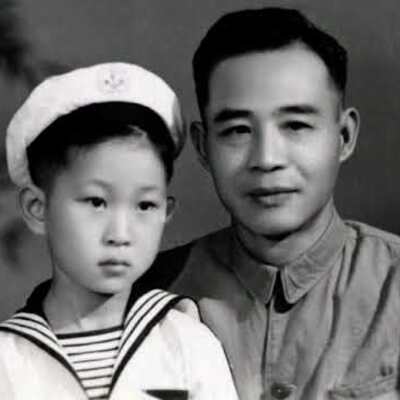
Storm under the Sun
In May 1955, Mao Zedong launched a nationwide campaign to “purge the counterrevolutionary clique of Hu Feng,” which is widely regarded in academic circles as the first large-scale Literary inquisition after the founding of the People's Republic of China.
Hu Feng, the central figure of the campaign, was a poet, critic, and translator. Inspired by Lu Xun, who was regarded as the most influential Chinese writer associated with the May Fourth Movement, Hu devoted himself to the revolution in pursuit of people's liberation. Considered the successor of Lu Xun's New Literature Movement, he was the head of the propaganda of the League of Left-Wing Writers, and founded the magazines July and Hope, through which he trained a large number of progressive left-wing poets and writers.
However, Hu became a target of Mao Zedong's campaign because he upheld the critical spirit of Lu Xun and insisted that writers should be independent rather than mouthpieces of the Communist Party. According to official statistics, during the campaign against Hu Feng, 92 people were arrested, 62 were subjected to solitary confinement, 73 were suspended from their jobs, and 2,100 were implicated. Although only three people, including Hu Feng, were formally sentenced, many labeled key Hu Feng elements endured decades of imprisonment and reeducation through labor.
Director Peng Xiaolian's father, Peng Baishan (then a member of the League of Left-Wing Writers and head of the propaganda of the Shanghai Municipal Party Committee), was also subjected to severe persecution, and in 1968 was beaten to death for being the “spokesman of the Hu Feng counterrevolutionary group within the Party. Starting in 2003, Peng Xiaolian and S. Louisa Wei visited more than 20 survivors of the anti-Hu Feng campaign. They also spent more than five years filming and producing Storm under the Sun. Through audio recordings of Hu Feng, interviews with survivors, family members of the victims, and scholars, the film presents from beginning to end how the anti-Hu Feng campaign unfolded, as well as the immense physical and psychological trauma that it imposed on the victims and their families.
As the first film to document the anti-Hu Feng campaign, Storm under the Sun tells the stories of these lesser-known left-wing poets and writers and how they participated in the revolution through their literary work. At the same time, the film demonstrates how the multiple political campaigns against intellectuals during the Mao era were one and the same, unified under the overarching goal of controlling thought and eradicating dissent.
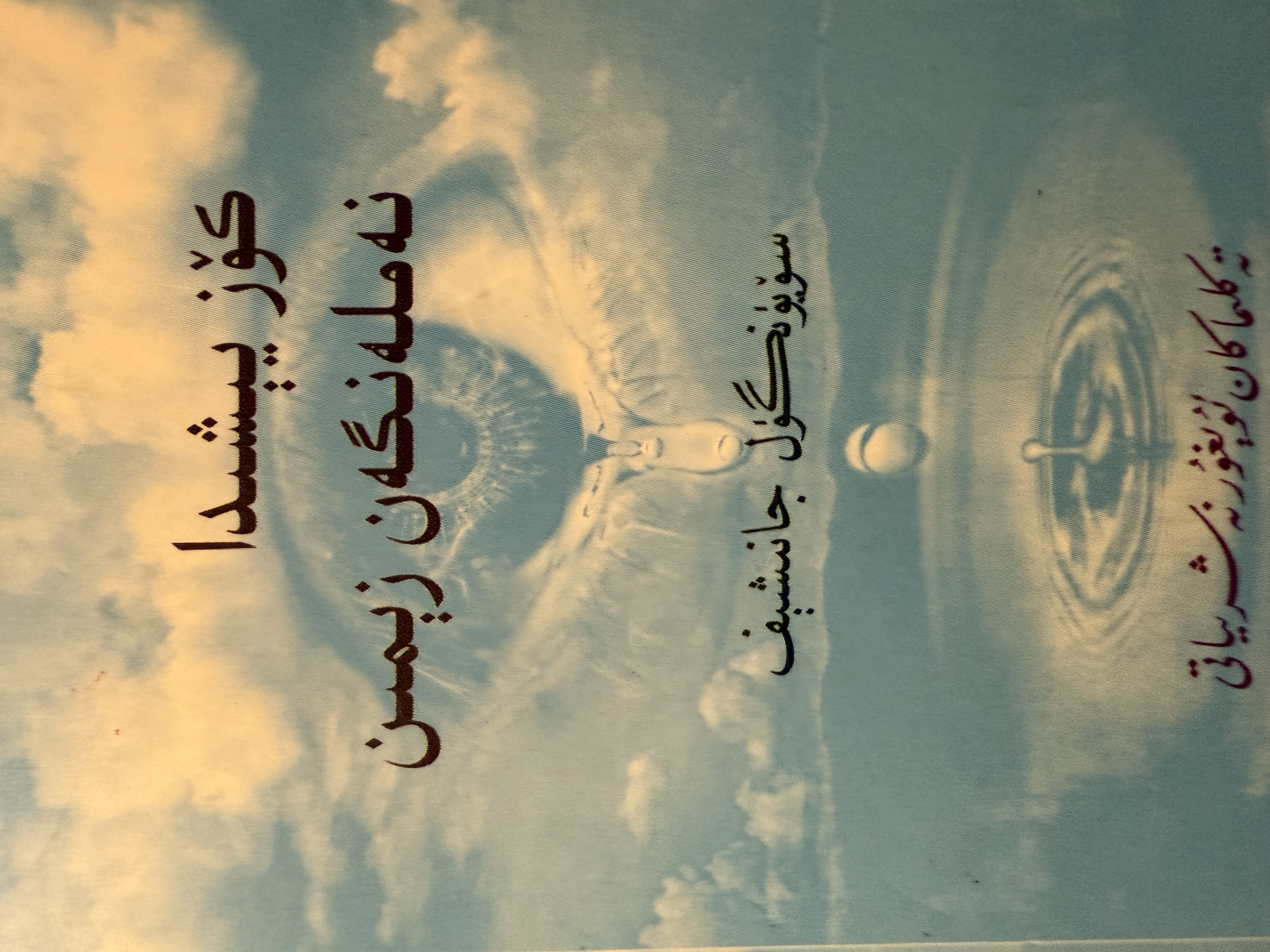
Köz Yéshida Nemlen'gen Zémin/The Land Drenched in Tears
(English follows) Bu kitab muhajirettiki Uyghur jem’iyitide nisbeten baldur neshir qilin’ghan, shundaqla Uyghur ziyaliylirining kommunist Xitay hökümranliqi astidiki paji'elik kechürmishlirini inchike détallar bilen teswirlep bergen edebiy xatire sheklidiki eslimidur. Téximu éniqraq qilip éytqanda, bu kitabta aptorning charek esirlik ré'al kechürmishliri asasiy liniye qilinip, 1957-yilidin 1982-yilighiche bolghan 25 yil jeryanida Sherqiy Türkistan (Shinjang)diki Uyghur istudéntlarning boran-chapqunluq sergüzeshtiliri we tragédiyelik teqdiri yorutup bérilgen.
1957-Yili Séntebirde emdila 17 yashqa kirgen Söyün'gül Chanishéf (aptor) Shinjang Méditsina Inistitutigha qobul qilinidu. Bu pütün Xitay miqyasida Maw Zédung bashlatqan «échilip-sayrash» dolquni emdila axirliship, «istil tüzitish» herikiti bashlanghan, Shinjang Uyghur Aptonom Rayonida «yerlik milletchilikke qarshi heriket» élip bérishning teyyarliqi jiddiy élip bériliwatqan mezgiller idi.
Söyün'gülning siyasiy dolqunlar ichide bashlanghan aliy mektep hayati uning kéyinki teqdiride oylap baqmighan qarangghu sehipilerni achidu. U Méditsina Inistitutidiki bashqa Uyghur sawaqdashliri bilen birlikte siyasiy jehette «échilip-sayrash»qa, «istil tüzitish» yighinlirigha qatniship, kompartiye heqqidiki pikir-qarashlirini ochuq otturigha qoyushqa mejbur qilinidu. Yashliq bahari urghup turghan, kelgüsige ümid bilen qarighan, emma siyasiy boran-chapqunlarda téxi pishmighan bu bir türküm sap-sebiy we qizghin oqughuchilar köz aldidiki rehmisiz siyasiy ré'alliqtin qattiq ümidsizlinidu. Sabiq Sowét Ittipaqi modélidiki ittipaqdash jumhuriyetlik aliy aptonomiye tüzümini Xitaydiki Uyghur, Tibet, Mongghul qatarliq az sanliq milletlerning aliy aptonomiye hoquqining tüp kapaliti dep bilgen bu yashlar, Xitay kompartiyesining Xitayche uslubtiki «milliy téritoriyelik aptonomiye tüzümi»din qattiq narazi bolidu. Ular, Shinjangda ölke derijilik atalmish «Shinjang Uyghur Aptonom Rayoni» emes, belki Sowét Ittipaqi modélidiki «Sherqiy Türkistan/Uyghuristan Ittipaqdash Jumhuriyiti» qurulushi kérek, dep qaraydu. Ularning «échilip-sayrash» yighinlirida dadilliq bilen otturigha qoyghan bu pikir-telepliri, kéyinche ularning siyasiy jehettiki qéchip qutulalmas éghir jinayiti bolup qalidu.
Shuningdin kéyinki polat tawlash, chong sekrep ilgirilesh, yerlik milletchilikke qarshi heriket jeryanida Söyün'gülni öz ichige alghan yerlik millet oqughuchiliri qattiq tenqid we teqipke, siyasiy bésim we rohiy azablargha duch kélidu. Acharchiliq yillirining éghir riyazetlirini béshidin ötküzidu. Xitay kompartiyesining az sanliq milletlerge qaratqan aldamchiliq siyasiti we saxta aptonomiyesining mahiyitini chongqur chüshinip yétidu. Netijide ularda mexpiy teshkilat qurup, yer asti siyasiy küresh pa'aliyetliri bilen shoghullinish; kéyinche shara'it piship yétilgende yerlik xelqni qozghap keng kölemlik milliy azadliq sépi shekillendürüsh; Xitay mustemlikisidin qutulup, Sherqiy Türkistanning musteqilliqini qolgha keltürüshtek siyasiy ghaye hem pikir birliki hasil bolidu. Ular 1962-yili 2-ayning 5-küni Shinjang Méditsina Inistitutining oqughuchilar yataq binasida mexpiy yighilip, «Sherqiy Türkistan Méhnetkesh Xelq Partiyesi» namliq siyasiy teshkilat quridu. Söyün'gül Chanishéf bu teshkilatning katipliq wezipisini öz üstige alidu. Halbuki, aridin birqanche ay ötmeyla Xitay Jama'et Xewpsizlik organlirining oqughuchilar arisigha mexpiy orunlashturghan jasuslirining uchur yetküzüshi bilen bu teshkilat pash bolup qalidu. Shu yili 4-ayning 29-küni Söyün'gül Chanishéfni öz ichige alghan nechche onlighan Uyghur oqughuchilar qolgha élinidu.
Shuningdin bashlap Söyün'gül we uning sawaqdashlirining uzun yilliq türme we mejburiy emgek hayati bashlinidu. Ürümchi türmisidiki 4 yilgha sozulghan qiyin-qistaq we qarangghu türme hayatidin kéyin, Söyün'gül we uning türmidishi Sajide Ürümchi etrapidiki emgek bilen özgertish lagérida mejburiy emgekke sélinidu. Bu jeryanda insan tesewwur qilghusiz teqip we qiyin-qistaqlargha, künige on nechche sa'etlik éghir emgekke, achliq we rohiy azablargha duch kélidu. Medeniyet Inqilabi bashlinishi bilen ularni téximu éghir qismetler kütiwalidu. Söyün'gül «siyasiy jinayetchi» dégen qalpaq bilen Ürümchi etrapidiki bir xelq kommunasigha yerleshtürülüp, ammining nazariti astida éghir emgek arqiliq özgertishke tapshurup bérilidu. U bu yerde türmidinmu better qiyin künlerge duch kélidu. Rohiy we jismaniy jehettin qattiq xorlinidu. Uzun yilliq türme, mejburiy emgek we qiyin-qistaq Söyün'gül Chanishéf we uning tutqundiki sawaqdashlirini öz ichige alghan bir ewlad Uyghur yashlirining yashliq baharini, arzu-armanlirini, ghaye we intilishlirini xazan qilidu. 1976-Yiligha kelgende Xitay kompartiyesining aliy rehbiri Maw ölüp, «Medeniyet Zor Inqilabi» axirlashqan, 1978-yili kommunist Xitayning milletler siyasitide «yumshash» bashlanghan bolsimu, emma Söyün'gül Chanishéf qatarliq «siyasiy jinayetchi» qalpiqi kiydürülgen bir ewlad Uyghur oqughuchilarning délosi hel bolmaydu. 1980-yillarning bashlirigha kelgende, Xitayning siyasiy atmosférasida körülgen «islahat» we «ishikni échiwétish» dolqunidimu héchqandaq siyasiy kengchilikke érishelmigen Söyün'gül pütün a'ilisi bilen birlikte tughulup ösken yurtini tashlap Awstraliyege köchmen bolup kétidu. Shundaq qilip, Söyün'gülning Sherqiy Türkistandiki 18 yilliq türme we tutqunluq hayati axirliship, erkin dunyadiki kéyinki hayati bashlinidu.
Bu eslime aptor Söyün'gül chanishéfning muhajirettiki hayati dawamida eyni waqittiki kündilik xatirisi bilen türme xatirilirini retlesh, toluqlash, qayta eslep yézish arqiliq wujutqa chiqqan. Pütün kitab 700 betke yéqin uzun sehpidin teshkil tapqan bolup, tili addiy, uslubi yenggil we güzel, hékaye weqeliki jiddiy we jelp qilarliq shekilde yézilghan. Bu kitab peqet aptorning béshidin köchürgen shexsiy kechürmishlirining addiy bayani bolupla qalmastin, belki 1950-yillarning axiridin 1980-yillarning bashlirighiche bolghan bir ewlad Uyghur istudéntlirining boran-chapqunluq kolléktip hayati we Uyghur ziyaliylirining kommunist Xitay réjimi astidiki paji'elik teqdirining janliq örnikidur.
Aptor kitabning bash qismigha yazghan kirish sözide, «musteqilliq arzusi bilen teshkilat qurup qolgha élin’ghan hemde türme we nazaret astida yashighan 18 yilliq hayatimdin qisqiche xatire qaldurup, yoshurun saqlap kelgen idim. Shu xatirige asasen bu kitabni yézip chiqtim. Bu kitabtiki weqelerning hemmisi béshimdin ötken, öz közüm bilen körgen hem anglighan heqiqiy ishlardur» dep yazghan. Istanbul Uniwérsitétining Uyghur proféssori Sultan Maxmut Qeshqeri bu kitabqa yazghan béghishlimisida «<köz yéshida nemlen'gen zémin> namliq bu kitabta yézilghan weqeler toqulma hékayiler we xiyaliy épizotlar bolmastin, hemmisi Söyün'gülning béshidin ötken we öz közi bilen körgen rast weqelerdur. Bu kitabta kommunist Xitay hakimiyitining Sherqiy Türkistanda yürgüzgen insan qélipidin chiqqan wehshiy siyasetliri emeliy pakitlar bilen chongqur pash qilinghan, bolupmu Maw Zédung bashlatqan <Medeniyet Inqilabi>ning dehshetlik menzirisi de dölet térori nahayiti janliq ipadilep bérilgen» dep yazghan.
Bu kitab 2006-yili Istanbuldiki Teklimakan Uyghur Neshriyati teripidin birinchi qétim neshir qilin’ghan. Kitab muhajirettiki Uyghur oqurmenliri arisida zor tesir peyda qilghan we bazarliq kitabqa aylanghan. 2015-yili yuqiri tiraj bilen ikkinchi qétim bésilghan. 2018-Yili in'gilizchigha terjime qilinip, En'giliyede neshir qilinghan.
<i>The Land Drenched in Tears</i> is the one of the earliest literary memoirs published in the Uyghur language within the diaspora community, detailing the experiences of Uyghur intellectuals under Chinese Communist rule. The book, written by Söyüngül Chanisheff, chronicles the turbulent experiences and tragic fate of Uyghur students in East Turkistan (Xinjiang) during the 25 years from 1957 to 1982, centered around the author’s quarter-century of real-life experiences.
In September 1957, Söyüngül, who had just turned 17, was admitted to Xinjiang Medical Institute. This was a time when Mao Zedong’s Hundred Flowers Campaign had just ended nationwide, the Rectification Movement had begun, and the Xinjiang Uyghur Autonomous Region was intensively preparing for the Anti-Local Nationalism Campaign. Along with other Uyghur classmates at the Medical Institute, Söyüngül was forced to participate in political “speaking out” meetings–when people were encouraged to voice criticism about the Communist Party. However, their bold views and demands expressed during these “speaking out” meetings later severe criticism, persecution, political pressure, and psychological torment during the Anti-rightist Campaign.
On February 5, 1962, they secretly gathered in a student dormitory at Xinjiang Medical College and established the East Turkistan Working People’s Party, with the political ideal and common goal of freeing themselves from Chinese rule and achieving independence for East Turkestan. Söyüngül Chanisheff served as the organization’s secretary. Just months later, due to an informant placed among students by Chinese security forces, the organization was exposed. On April 29 the same year, dozens of Uyghur students, including Söyüngül, were arrested.
In the subsequent years, Söyüngül went through imprisonment, as well as forced labor at labor camp and a people's commune, where she suffered severe physical and psychological damage.
Although Mao died in 1976, ending the Cultural Revolution, and China’s ethnic policies began to soften in 1978, cases like Soyungül’s were never rehabilitated. By the early 1980s, even amidst China’s reform and opening political atmosphere, Söyüngül —still denied any political clemency—eventually left her homeland with her family and emigrated to Australia.
This memoir was created during the author’s life in exile, based on her contemporary diaries, reorganized prison notes, and reconstructed memories. The nearly 700-page book is not merely a simple account of the author’s personal experiences, but also serves as a vivid portrayal of the turbulent collective life of a generation of Uyghur university students from the late 1950s to early 1980s, and the tragic fate of Uyghur intellectuals under the Chinese Communist regime.
The book was first published in 2006 by Taklamakan Uyghur Publishing House in Istanbul. It had a significant impact among diaspora Uyghur readers and became a bestseller. A second edition with higher circulation was published in 2015, and an abbreviated English translation was published in the UK in 2018. <a href="https://www.foyles.co.uk/book/the-land-drenched-in-tears/s-y-ng-l-chanisheff/9781910886380">The English edition can be purchased here</a>.
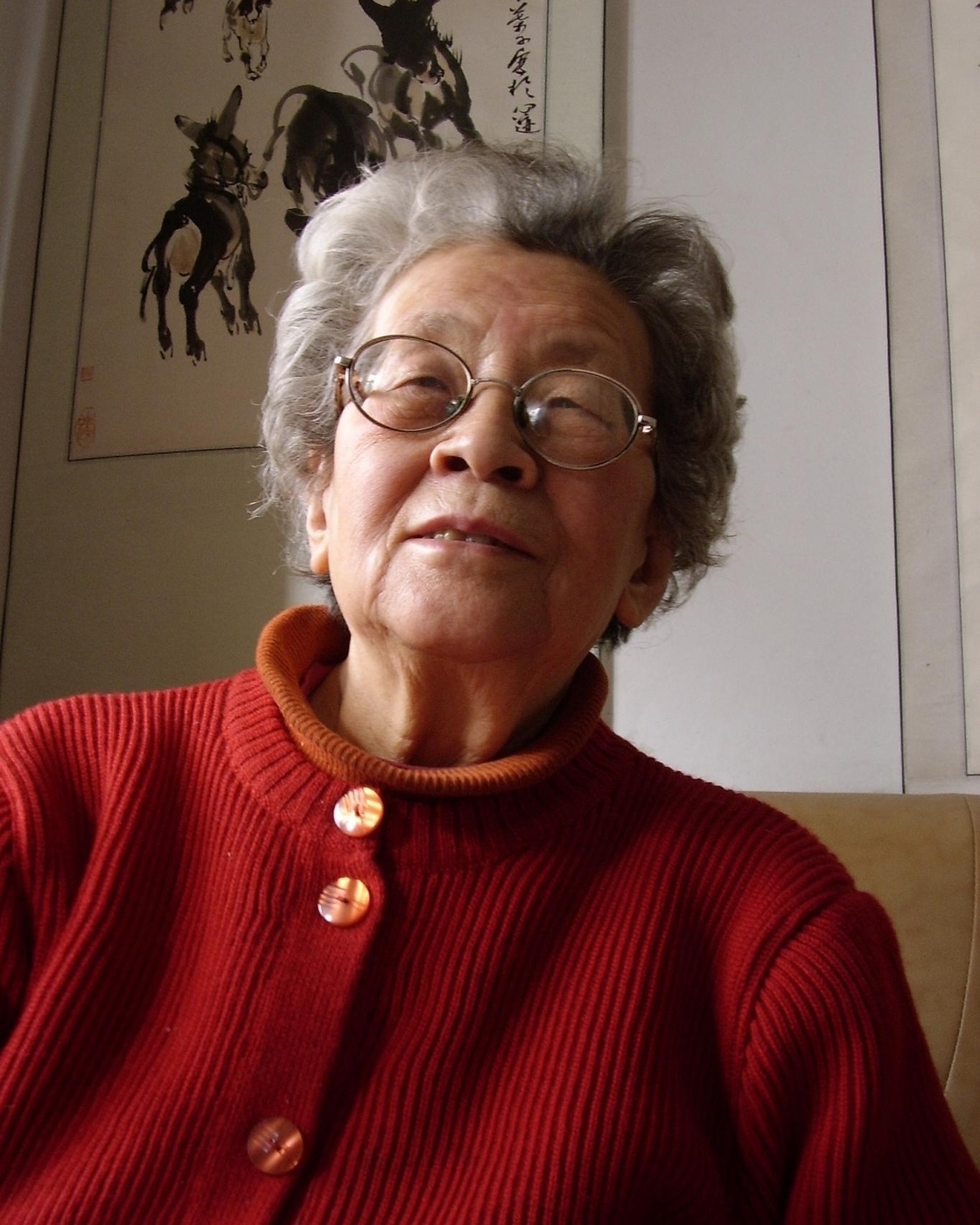
Fengming, A Chinese Memoir
Fengming, A Chinese Memoir is director Wang Bing's second feature-length documentary. The film primarily recounts the long and tragic experiences of an individual in China from the late 1940s to the 1990s, as narrated by the protagonist, He Fengming.
In 1949, with the founding of the People’s Republic of China, 17-year-old He Fengming enthusiastically dedicated herself to the socialist construction of the new nation. She and her husband worked as journalists at a provincial newspaper. In 1957, the Chinese Communist Party launched the Anti-Rightist Campaign. After her husband published three articles in the provincial newspaper, he was labeled a "rightist." She, too, was implicated by her husband and also branded a rightist. During several months of denunciation and struggle sessions, she endured such torment from others that she attempted suicide multiple times, but failed. One evening, returning home, her husband held her, and for the first time, his tears fell on her shoulder.
In April 1958, He Fengming and her husband were forcibly sent to two different labor reform farms in western China to undergo thought reform through labor. During her two and a half years at the farm, she experienced grueling physical labor, hunger, death, and psychological devastation. In 1960, she received a letter from her father informing her that her husband's life was in danger. She tried everything to find some food and, braving heavy snow, rushed to the farm where her husband was working. However, her husband had already starved to death.
For the next 20 years, He Fengming lived precariously, labeled as a rightist and raising her two young children, until her rehabilitation in 1979. In 1991, she returned to the labor reform farm where her husband had died, hoping to find his grave, but ultimately she did not succeed. In her later years, undeterred by external pressures, He Fengming used her pen and tears to document her painful life.
In 2007, the film won the Grand Prize in the International Competition section at the Yamagata International Documentary Film Festival in Yamagata City, Japan.

The True Face of Fang Lizhi
The True Face of Fang Lizhi was edited by the General Office of the Central Commission for Discipline Inspection of the Communist Party of China and published by Law Press in July 1989.
Fang Lizhi was one of Beijing's most prominent intellectuals during the 1989 Tiananmen Square Democracy Movement. An astrophysicist, he was labeled a "rightist" in his earlier years. Starting in the autumn of 1988, he actively participated in political study groups at Beijing's universities and gave interviews to foreign media, openly criticizing the Chinese Communist Party's Four Cardinal Principles, which called for upholding socialism and the Communist Party rule. His views resonated with students in Beijing at the time.
On January 6, 1989, he penned an open letter to then-Central Military Commission Chairman Deng Xiaoping, suggesting that democracy activists like Wei Jingsheng be released that year for the National Day celebrations. In February 1989, Fang Lizhi wrote "China's Hope and Disappointment," which Wang Dan and others posted as a big-character poster at Peking University. In June 1989, the CCP authorities issued an arrest warrant for Fang Lizhi on charges of "counter-revolutionary propaganda and incitement." Fang subsequently sought refuge in the U.S. Embassy and later sought exile in the United States.
This book serves as a propaganda tool for the Chinese Communist Party, compiling Fang Lizhi's what the book called "reactionary statements" where he "opposed the Four Cardinal Principles and advocated bourgeois liberalization." It also gathers articles from Chinese Communist Party newspapers that criticize Fang Lizhi for "inciting and organizing the June Fourth riots." From an official government perspective, the book offers insights into Fang Lizhi's ideas and sheds light on China's social and political thought environment before and after June Fourth.
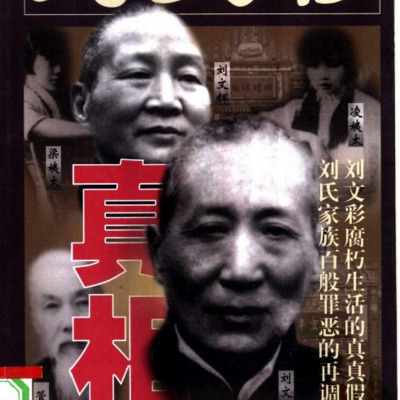
The Truth about Liu Wencai
In the mid-20th century, Liu Wencai, a large landowner in Sichuan Province, spent almost all of his family's wealth in his later years on promoting education, bridge construction and road building, and was known as a great benefactor in the region. However, during the Great Leap Forward and the Cultural Revolution, he was portrayed as an archetype of evil landlords in the 3,000-year history of feudalism in China.
As the controller of great wealth in southern Sichuan during the Republic of China period, Liu Wencai did accumulate a huge fortune from plunder in his early years, but in his later years he invested most of it in public welfare. He financed and presided over the construction of a highway, as well as the Wanchengyan irrigation system, benefiting hundreds of thousands of farmers. He also spent almost all of his family's wealth to found the Wencai Middle School (today's Anren Middle School), which at the time was known as Sichuan's best privately-run school. In the memories of the local people, Liu Wencai collected less land rent than what was collected by the government after 1949. He was praised for providing financial assistance to poor families during special days and festivals, and for mediating civil disputes in a fair manner.
These facts were erased under the ultra-leftist propaganda. The authorities even fabricated the story of Liu Wencai keeping farmers in a dungeon filled with water, as well as making sculptures depicting how Liu Wencai was exploiting farmers, in order to incite hatred against him. This made Liu Wencai one of the most famous evil landlords in China.
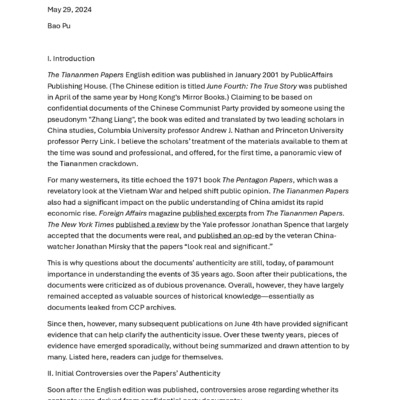
New Evidence Concerning the Authenticity of The Tiananmen Papers
Few books on recent Chinese history have caused such controversy as "The Tiananmen Papers". The book is ostensibly a collection of original documents compiled by Zhang Liang, a pseudonym for someone claiming to be a high-ranking CCP official who leaked the papers. The book’s credibility was aided by it being edited by two well-known western scholars of China, Perry Link, then of Princeton University and now of the University of California, Riverside, as well as Columbia University professor Andrew J. Nathan. An introduction was written by Orville Schell, a well-known writer on China who was then a professor at the University of California, Berkeley.
Almost immediately upon publication, the book was criticized for its unclear provenance, a point aided by Zhang Liang’s anonymity. Most scholars agreed that the papers were a mixture of previously released documents from government offices, which were uncontroversial, and accounts of meetings between senior leaders. The latter came under scrutiny, with some saying that the language appeared stilted or seemed to mix in language used in leaders’ public speeches.
This essay by the well-known Hong Kong publisher Bao Pu points out that since 2004, most people seem to feel that the issue of provenance will never be settled but that the documents are still important historically. Bao critiques this, using books published over the past two decades to update the question of authenticity. In careful language, he further questions key points of the documents, showing that they do not match new material, such as memoirs. Bao's conclusion: the Tiananmen Papers are not documents from the CCP’s archive, which is their claim, but rather works of dubious origin that cannot be used to better understand the events leading up to the massacre of civilians on the night of June 3-4, 1989. The top-secret documents, Bao writes, are a “phantom” that must not be used as building blocks for history.
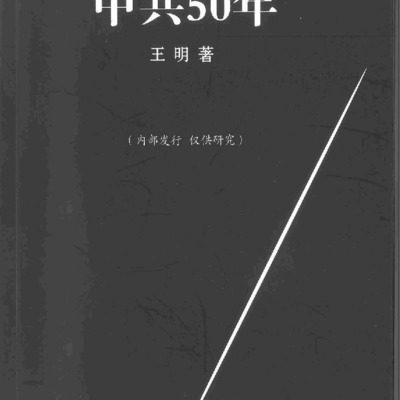
Fifty Years of the Chinese Communist Party
The author Wang Ming was an early member of the Communist Party of China (CCP) and the first of the "28 and a half Bolsheviks," who lost power after the Yan'an Rectification and were gradually marginalized by Mao. After the Yan'an Rectification, the Internationalists, led by him, lost power in the party. He was gradually ostracized by Mao Zedong, who expatriated him to the Soviet Union in 1956. In his book, Wang Ming recounts his decades-long feud with Mao. It provides a fascinating insight into the early history of the CCP.

Remembering Lin Zhao
Independent director Tiger Temple began shooting this film in 2010 and completed it in 2012, with subsequent revisions. The film features interviews with Lin Zhao's former lover Gan Cui as well as interviews with several independent scholars such as Qian Liqun and Cui Weiping. It is a powerful addition to Lin Zhao's memory. This film was selected as one of the top 20 finalists in the 2012 Sunshine Chinese Documentary Awards.
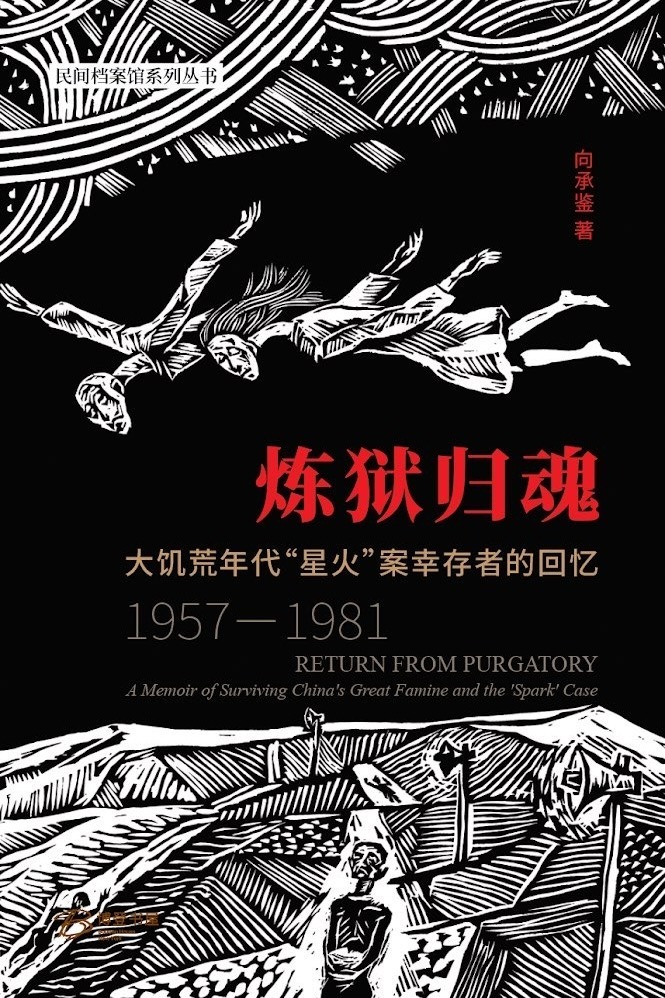
Return of the Soul from Purgatory: Memoirs of a Survivor of the "Sparks" Case from the Great Famine Era
In 1960, a group of faculty and students from Lanzhou University, who had been labeled Rightists and sent down to rural areas in Tianshui, Gansu, personally experienced the Great Famine. They self-published <i>Spark</i> magazine to expose and criticize the totalitarian rule that led to this catastrophe.<i>Spark</i> only published one issue before its participants were arrested and labeled as a counterrevolutionary group. Many were sentenced to long prison terms, and some were even executed. <a href=“http://108.160.154.72/s/china-unofficial/item/1759#lg=1&slide=0”>The first issue of <i>Spark</i> and more information about the "Spark Case" can be read here</a>.
<i>Return from Purgatory: A Survivor’s Memoir of the ‘Spark Case’ in the Great Famine Years (1957–1981)</i> is the autobiography of Xiang Chengjian, a key participant in <i>Spark</i> magazine. At the time, he and another student were responsible for printing the first issue, and he contributed six articles to <i>Spark</i>. Due to his involvement, he was sentenced to 18 years in prison for his role in the Spark case and was not rehabilitated until the early 1980s.
This memoir is divided into three sections, with a total of thirteen chapters spanning over 350,000 characters. It documents Xiang’s journey from being labeled a Rightist and sent to perform forced labor, to his arrest and 19-year imprisonment for his involvement in <i>Spark</i>, and finally to his struggle for rehabilitation and efforts to rebuild his life after release. In the book’s preface, scholar Ai Xiaoming offers the following assessment:
"Xiang Chengjian’s memoir holds significant value for the study of the intellectual history of contemporary China. First, it serves as another important testimony of the “Spark Case”, following Tan Chanxue’s memoir <i><a href=“”>Sparks: A Chronicle of the Rightist Counter-Revolutionary Group at Lanzhou University</a></i>, making it a crucial historical document on this act of resistance. The author reconstructs the social context before and after the case and describes how the young intellectuals behind <i>Spark</i> bravely challenged totalitarian rule. Second, the book provides a detailed account of labor camps in western China, with the author documenting his 18 years of forced labor in Gansu and Qinghai, unveiling a western chapter of China’s Gulag system. Third, it is a deeply personal intellectual history of a resister, showing the immense suffering, trials of life and death, and personal resilience under the crushing force of state violence."
The book’s appendix includes Xiang Chengjian’s six articles for <i>Spark</i>, an in-depth investigative report on him by journalist Jiang Xue, and a chronological record of the Spark Case compiled by Ai Xiaoming.
<i>Return from Purgatory</i> is published by Borden Press in New York and is the first book in the “People’s Archives Series”, published by the China Unofficial Archives. The author, Xiang Chengjian, has generously authorized the archive to share the book’s digital edition. Readers are encouraged to purchase the book to support the author and publisher.

Jiabiangou Elegy: Life and Death of the Rightists
This film is a five-part documentary by the filmmaker and feminist scholar Ai Xiaoming on the persecution of inmates at the Jiabiangou labor camp in Jiuquan, Gansu province, where more than 2,000 people died. The documentary includes interviews with the few remaining survivors and documents efforts to commemorate the dead. The director interviewed survivors of Jiabiangou and the children of the victims and listened to their stories about the past; she also found former correctional officers and their descendants to understand the causes of labor camps and the Great Famine from different angles.
Shot by Ai and a team of volunteers, the film presents the conflict between the preservation and destruction of memory.
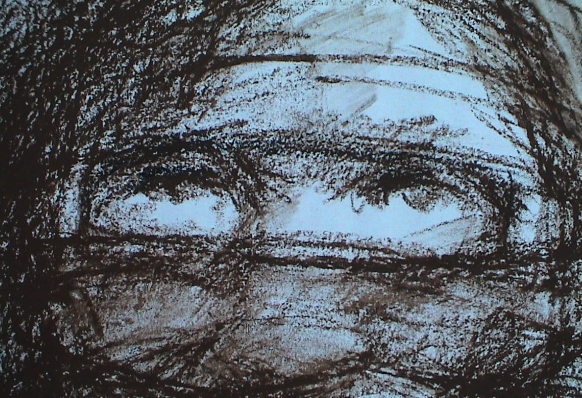
In Search of Lin Zhao's Soul
Hu Jie narrates the life of Lin Zhao, a Christian dissident who was condemned as a Rightist in the late 1950s and executed during the Cultural Revolution. Prior to becoming a mentcritic of the government, Lin Zhao was an ardent believer of communism. She demonstrated talent in writing and speaking as a star student in Peking University. However, after criticizing the government in 1957 during the Hundred Flowers Campaign, she was cast as anti-revolutionary. Despite the government’s attempts to silence her, Lin Zhao continued to speak and write publicly, including contributing two epic poems to Spark, an underground student-run journal. In 1960, she was arrested, and despite being released briefly in 1962, spent the rest of her life behind bars, under extremely poor living conditions. Nevertheless, she continued to write in prison, sometimes with her blood. In 1968, at the age of 36, she was executed by a firing squad.
In this documentary, Hu Jie showcases many of Lin Zhao’s surviving writings and poetry. These pieces often contain criticisms of the communist regime, as well as commentary on policy issues pertaining to labor and land reform. In making this film, Hu Jie traveled around China to interview friends and associates of Lin Zhao, who knew her as a student, activist, or prisoner. This documentary includes excerpts from interviews with them, which inform us about Lin Zhao’s personality and motivations.
This documentary has contributed to a widespread revival of interest in Lin Zhao, who had almost become a forgotten figure until the film’s appearance.
